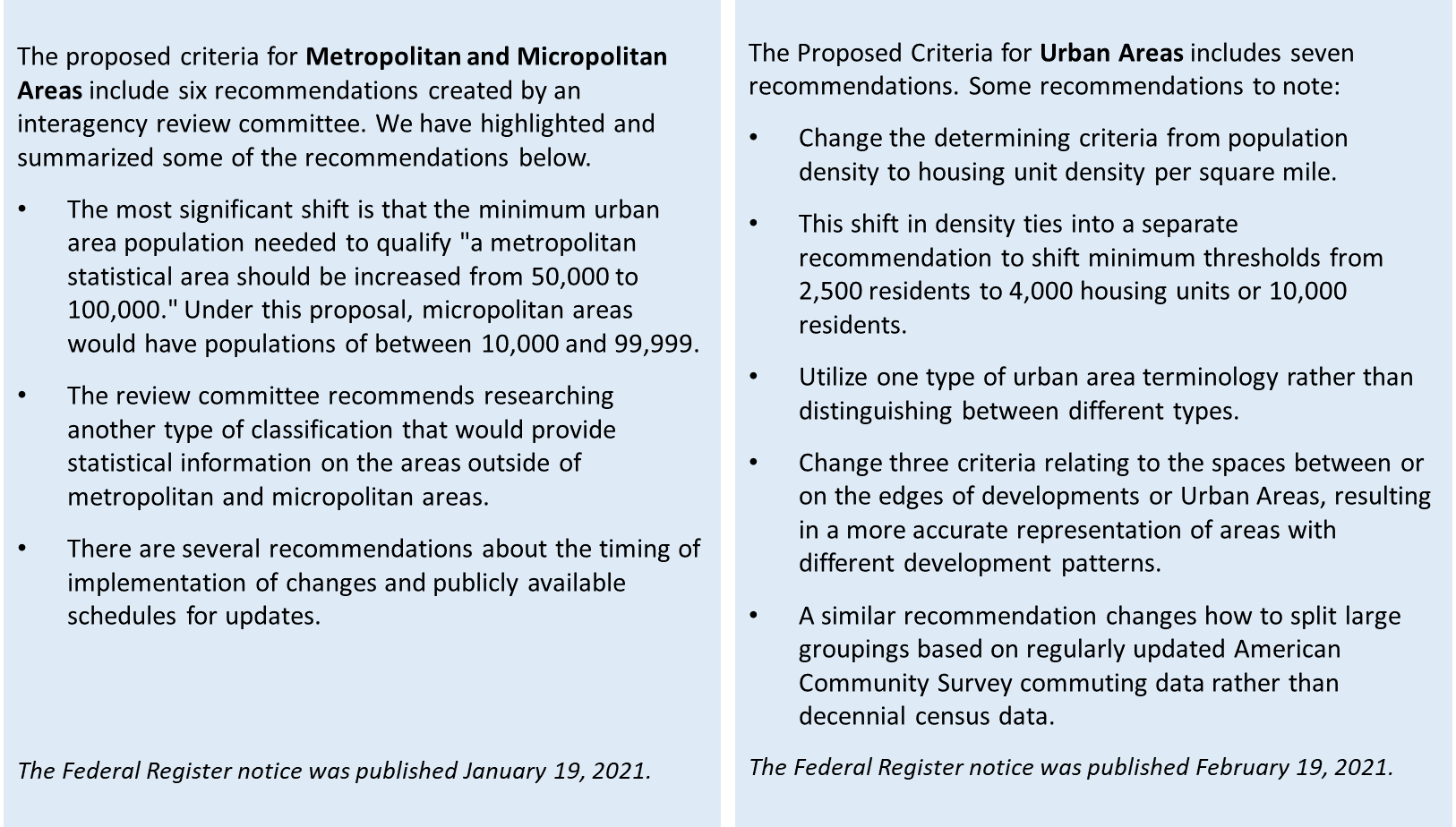Blog Post
Insight: New proposed criteria for Metropolitan and Micropolitan Statistical Areas and Urban Areas
By: Mallory Bateman
Note: The opinions expressed are those of the author alone and do not reflect an institutional position of the Gardner Institute. We hope the opinions shared contribute to the marketplace of ideas and help people as they formulate their own INFORMED DECISIONS™.
Mar 16, 2021 – The decennial census is not the only once-a-decade opportunity for the public to potentially impact data that shapes our communities. Although less well known, several programs revisit their criteria once every ten years. The public gets the chance to comment when the criteria are shared in the Federal Register.
Proposed criteria for two programs, Metropolitan and Micropolitan Statistical Areas and Urban Areas, were recently released in the Federal Register. These notices provide an opportunity for stakeholders across the United States to express why the suggested edits do or do not work for their communities and constituents.
Metropolitan and Micropolitan Statistical Areas are delineated by the Office of Management and Budget (OMB) for statistical purposes, based on data and analysis from the Census Bureau. Urban Areas are a Census Bureau delineation that represent densely developed areas. These two programs interact with one another. Urban areas serve as the core of metropolitan and micropolitan areas, which are types of core-based statistical areas.
In Utah, there are currently five metropolitan areas and four micropolitan areas. These areas are aggregations of counties based around a single urban area that are related by commuting patterns. The supplemental materials for the notice include a map that uses 2010 census data to indicate areas that might shift from metropolitan to micropolitan. This map includes two of Utah’s metropolitan areas, St. George and Logan. The most recent population estimates for the determining core areas appear to meet population thresholds necessary to maintain metropolitan status for the next decade.
While metropolitan statistical areas are considered a statistical geography, multiple federal, state, and local government entities utilize them to produce data or funding allocations. In several states, with the consideration of more recent population data, the proposed thresholds’ changes would result in their metropolitan areas converting to micropolitan areas. This shift in designation could limit access to data when entities do not produce micropolitan-level insights, impact state programs and funding tied to metropolitan areas, and impact how private or commercial interests analyze local areas when considering economic development in the area.
Some highlights from the proposed recommendations can be found below. Full text of the notices can be accessed through the links in the second paragraph (above).
If these topics are of interest, but you would like to learn more, you have an opportunity on March 16. The National Association of Business Economics (NABE) and the Association for University Business and Economic Research (AUBER) are hosting a webinar featuring internal and external perspectives. The Gardner Institute’s Juliette Tennert will moderate the conversation. You can register here.
If you have comments to submit, certain types of comments will be the most impactful. Comments with the most significant impact on the OMB are those that consider these classifications’ intended use and present a broad context. If statutory language requires your entity or government to consider these delineations, include those comments as well. To submit comments by the deadlines listed below, click through the links:
- March 19 for Proposed Criteria for Metropolitan and Micropolitan Statistical Areas
- May 20 for Proposed Criteria for Urban Areas for the 2020 Census
Mallory Bateman is a senior research associate and Utah State Data Center coordinator at the Kem C. Gardner Policy Institute.







